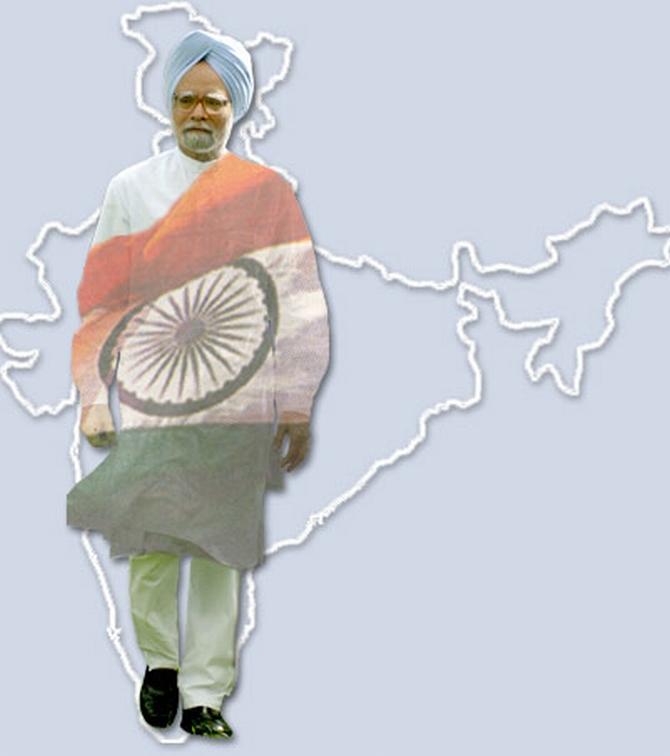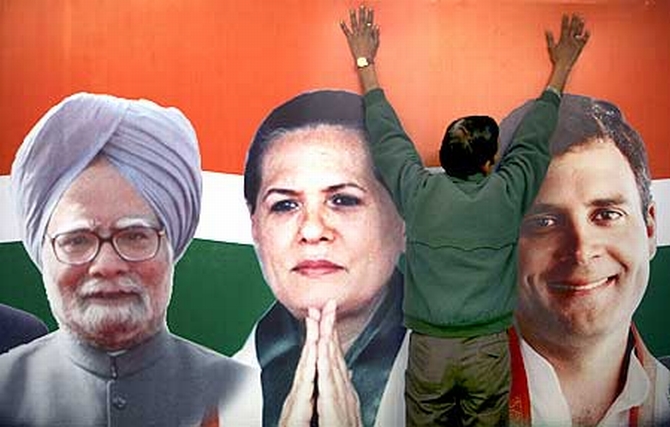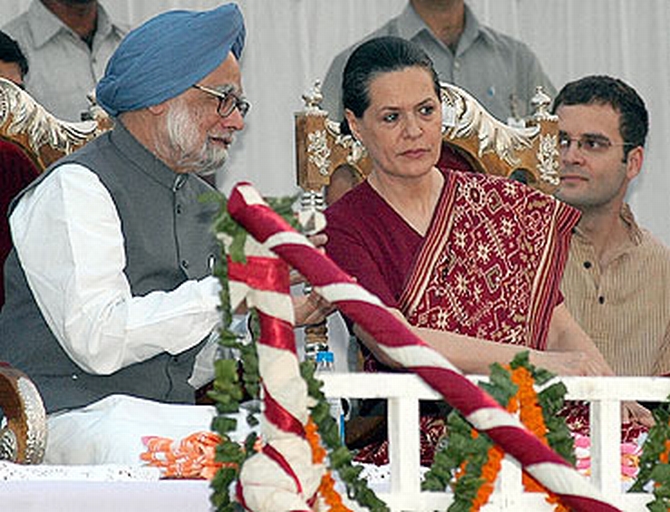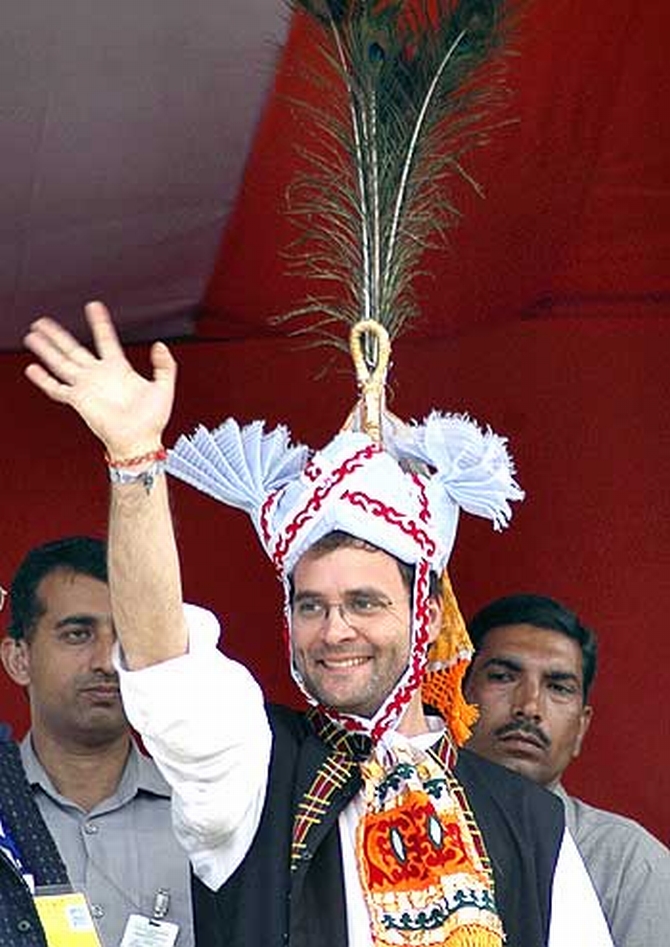
Dr Singh was extremely reluctant to address a press conference and he agreed only after considerable persuasion from senior Congress leaders, says Anita Katyal
When Prime Minister Manmohan Singh addresses a rare press conference on January 3, he will use the opportunity to explain the measures taken by the United Progressive Alliance government to contain inflation and combat corruption.
He will also try to dispel the widespread perception that the ruling alliance is in the grip of a policy paralysis.
At the same time, he will pave the way for Congress Vice President Rahul Gandhi’s anointment as the party’s prime ministerial candidate in the forthcoming Lok Sabha election.
It has become imperative for the prime minister to place his side of the story in the public domain since there has been an outcry in the Congress that the Centre’s inability to bring down prices and deal effectively with corruption had dealt a crippling blow to the party in the recently-concluded assembly polls.
According to Congress sources, the prime minister was advised by the party to address a press conference though he was extremely reluctant to do so.
Click on NEXT for more…

Besides his limited interactions with media personnel on his visits abroad, this is only the second press conference that he will be addressing in his second term in office.
The press conference has been deliberately slotted well before the January 17 meeting of the All India Congress Committee.
Angry Congress leaders, who are still smarting from the recent poll reverses, could target the UPA government in general and Dr Singh in particular at the AICC meeting.
The PM may face flak at the meeting over the Centre’s policies which, believe Congress leaders, proved to be the party’s undoing. It can be safely assumed that it would become difficult for Dr Singh to be heard in such a charged atmosphere.
Click on NEXT for more…

It was felt that the prime minister should address a press conference to present the government’s viewpoint well before the AICC meeting to insulate him from future attacks.
This is also the reason why the prime minister spoke at the meeting of the Congress Parliamentary Party in December for the first time in ten years. The CPP meeting is usually addressed by party president Sonia Gandhi.
Since the CPP meet was held shortly after the party’s humiliating defeat in the recent assembly polls, the Congress thought it necessary that the PM should defend his government on the twin issues of corruption and price rise.
A specially-prepared booklet, giving details of the UPA government’s accomplishments, was also distributed to party MPs at this meeting.
The press conference on January 3 is expected to further elaborate on the contents of this booklet as a damage control effort in the run-up to the forthcoming Lok Sabha election.
UPA sources disclosed that the prime minister was extremely reluctant to address the press conference and he agreed only after considerable persuasion.
Click on NEXT for more…

Dr Singh had retreated into a shell after he was personally attacked in connection with the coal-gate scam.
In fact, the Congress rank and file believes that the party and the government have been losing the war of perception because its top leaders -- Dr Singh, party president Sonia Gandhi and Vice-president Rahul Gandhi -- have not been sufficiently communicative. It is felt that despite all the criticism he has faced, it would have helped change people’s perception if Dr Singh had spoken out more frequently since his personal integrity has never been in any doubt.
While Dr Singh has reluctantly decided to abide by the party’s wishes, Rahul Gandhi is also attempting an image make-over after the Congress’s rout in the recent assembly polls.
He has addressed media conferences, made a definitive statement in his speech at the annual general body meeting of the FICCI, taken the lead in the passage of the Lokpal Bill and devised a time-bound action plan for Congress-ruled states to tackle corruption and price rise.
Although it is acknowledged that Rahul Gandhi is the future face of the Congress, the rank and file of the party want him to be formally named as the party’s prime ministerial candidate.
Click on NEXT for more…

The demand will reach its crescendo at the AICC meet, making it difficult for the leadership to delay the announcement, despite Rahul’s personal reluctance.
“What other option do we have but to name him? I don’t think we can skirt this issue any longer,” a senior Congress leader told Rediff.com.
Congress strategists were initially reluctant about formally naming Rahul as the party’s PM candidate because they did not want the forthcoming Lok Sabha polls to be converted into a Presidential-style contest between Rahul and the Bharatiya Janata Party’s PM candidate Narendra Modi.
But they are coming around to the view that the party has to project a leader for the PM’s post or else it will be construed as a sign of indecision.
Worse, the Opposition will use the opportunity to run a campaign claiming the Congress is scared to pit Rahul against Modi.
For his part, Dr Singh is expected to tell media personnel on January 3 that he is not in the running for the PM’s post for a third term and that it was time younger leaders came to the forefront and took charge.
Click on NEXT for more…
...